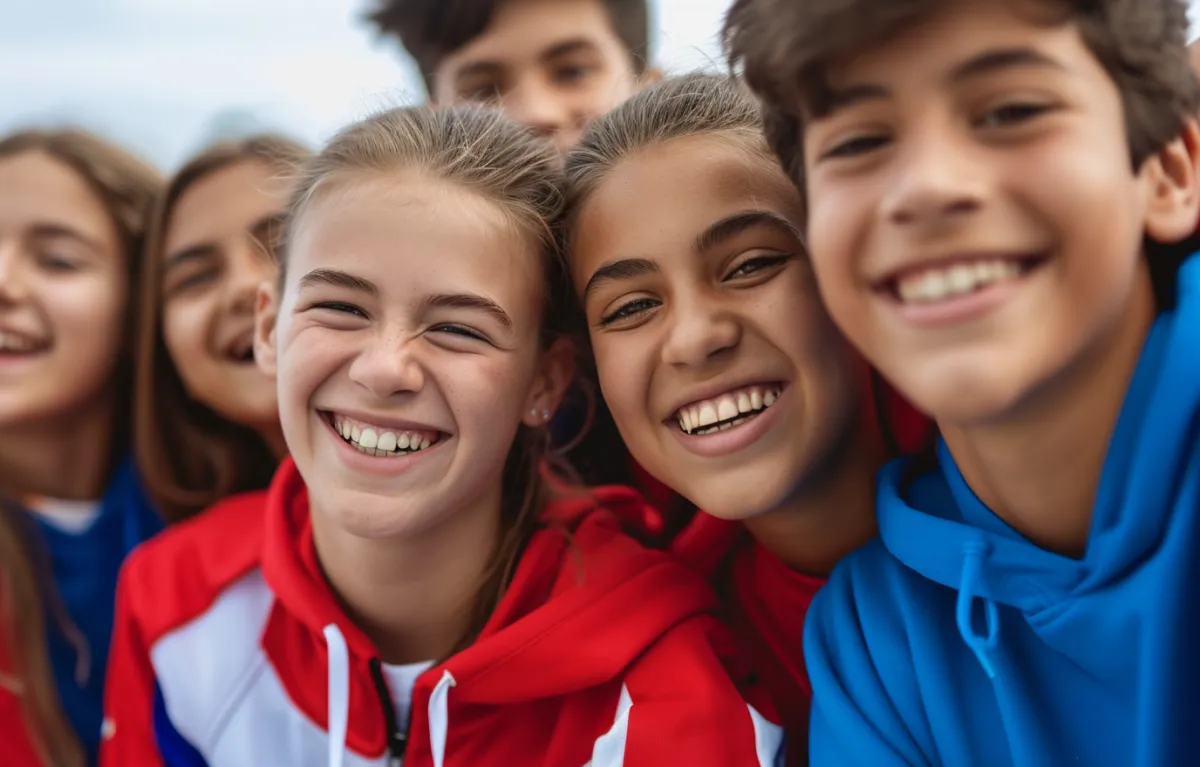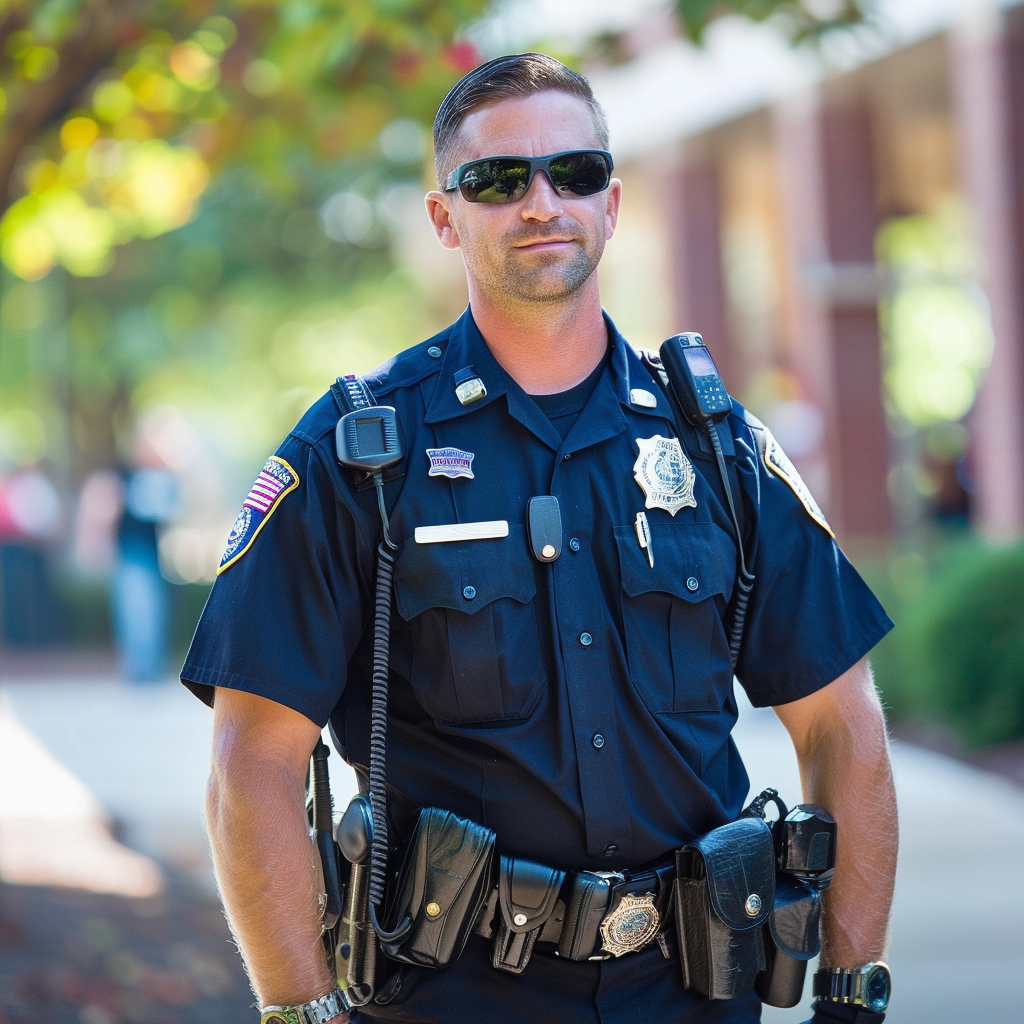Blog
Home > Blog

Our Children's Safety: A Priority
As a parent, educator, or concerned citizen in our Coastal Georgia communities, you understand the paramount importance of safeguarding our youth. With the numerrous challenges facing our kids today, it can often feel overwhelming to know where to begin. This is where our reliance on public safety measures comes into play.
By implementing strategic approaches, we can begin creating a secure environment for our children. From supporting community policing initiatives to implementing engaging youth programs, there is a multitude of avenues through which we can start causing positive change. And the beauty of it all? No capes or superpowers required.
Let's identify concrete steps towards fortifying a safer environment for the youth of District 180 through deliberate public safety practices. Together, we have the power to sculpt a brighter future for the next generation.
Key Principles for Safeguarding Youth in Public Spaces
When it comes to protecting our youth, there's no one-size-fits-all solution. Every organization serving young people must carefully consider key factors like staffing, participant mix, program mission, and environment to design effective youth protection measures.
Considerations for Effective Youth Protection
We need to bring together local law enforcement, administrators from our schools, social services, and community members to create comprehensive strategies. It's not just about having policies on paper - it's about fostering a culture of safety and empowerment for our kids.
Action Steps to Implement Youth Safety Measures
So what does this look like in practice? Here are some key action steps I recommend:
Develop partnerships between schools, parks and rec, libraries, and community centers to provide safe spaces for positive youth activities.
Implement developmentally appropriate conflict resolution programs for all ages.
Invite parents, law enforcement, and community leaders into schools to serve as role models and provide extra supervision.
Equip students with skills to manage emotions and resolve conflicts peacefully.
The bottom line? Keeping our youth safe is a community-wide effort. By working together and implementing proven best practices, we can create environments where every child has the opportunity to thrive.
Establishing a Comprehensive Youth Protection Training Program
When it comes to youth protection, training is absolutely essential. But not just any training will do - it needs to be comprehensive, age-appropriate, and grounded in real-world scenarios.
Mandatory Training for All Staff and Volunteers
First and foremost, every single person working with youth, whether staff or volunteer, needs to undergo rigorous training. This should cover topics like recognizing signs of child abuse, proper boundaries, reporting procedures, and prevention techniques. And it can't be a one-and-done deal - regular refresher trainings are crucial to keep everyone's skills sharp. The training content itself needs to be tailored to different age groups. What's appropriate for high schoolers won't necessarily resonate with elementary kids. That's why it's so important to work with child-safety experts to develop materials that are engaging, relevant, and developmentally appropriate for each age level.
Incorporating Scenario-Based Learning
The most effective training goes beyond just lecturing. It gets participants actively engaged through scenario-based learning. This could mean role-playing exercises, small group discussions of case studies, or even virtual reality simulations. By working through realistic situations, staff and volunteers build muscle memory and confidence to handle real-life challenges. The key is to create a youth-protection training program that is comprehensive, collaborative, and practical. When we invest in equipping our youth-serving teams with the right tools and skills, we're investing in a safer future for the next generation.
Collaborating with Schools and Community Organizations
Protecting our youth isn't a job for any one entity alone. It takes a village, as the saying goes - and that means schools and community organizations must work hand-in-hand. One key partnership is between schools and law enforcement, particularly through the use of school resource deputies (SROs). SRDs are an invaluable asset to our schools. They build positive relationships with students, provide mentorship, and help identify and address safety concerns early on. But it's not just about having an armed presence - SRDs require specialized training to understand adolescent development, de-escalation techniques, and restorative justice practices.
Engaging with Youth-Serving Organizations
Schools can't do it alone though. Partnering with youth-serving organizations like Boys & Girls Clubs, 4-H, faith-based groups, and sports leagues is essential. These groups often have deep roots and trust within the community. By aligning efforts and sharing resources, we can cast a wider safety net and provide more positive outlets for kids.
Promoting Positive School Climate
Ultimately, fostering a positive school climate stands out as one of the most effective tools for preventing violence. When students experience a sense of safety, support, and engagement, they're less inclined to engage in disruptive or harmful behaviors. This involves giving priority to initiatives such as social-emotional learning, restorative discipline practices, mental health support, and opportunities for student leadership. By collaborating across school administrations, law enforcement, youth organizations, and the broader community, we can build a strong network of support to ensure the safety and well-being of our children, allowing them to flourish.

Implementing Evidence-Based Strategies for Youth Engagement
When it comes to preventing juvenile delinquency and promoting positive youth development, not all strategies are created equal. To truly move the needle, we need to focus on implementing evidence-based practices that have been proven to work. One powerful tool is diversion programs, which provide alternatives to formal processing in the juvenile justice system. Instead of defaulting to punishment, these programs connect youth with resource programs like counseling, mentoring, and skill-building workshops. The goal is to address the underlying issues contributing to delinquent behavior and provide kids with the support they need to get back on track.
Promoting Positive Youth Development
But we can't just focus on problems - we also need to proactively promote positive youth development. This means creating opportunities for young people to build skills, explore their interests, and contribute to their communities in meaningful ways. Some effective strategies include:
Youth leadership programs
Service learning projects
Arts and cultural enrichment
Sports and recreation activities
Career exploration and job readiness training
When young people have the chance to develop their strengths and passions in a supportive environment, they're more likely to thrive.
Addressing Trauma and Mental Health Needs
The impact of trauma and mental health issues on young people's behavior is huge. Many kids have faced violence, abuse, or neglect, which can really mess up their growth. To help them properly, we need to make sure all our programs and systems consider their trauma and provide good mental health support. That means things like checking for trauma, using therapies that work, teaching stress-relief techniques, supporting families, and working with community mental health groups. By doing this, we can help kids stay out of trouble, bounce back from tough times, and become their best selves.
Leveraging Technology and Data for Enhanced Youth Protection
In today's digital age, technology and data can be powerful allies in our efforts to keep kids safe. By leveraging these tools strategically, we can work smarter, not just harder, to prevent violence and abuse. One key resource is sex offender registries, which provide crucial information to help organizations screen staff and volunteers. While not foolproof, these databases can serve as an important first line of defense in identifying individuals with known histories of sexual misconduct. Youth-serving organizations should have clear policies and procedures in place for regularly checking these registries and acting on any red flags.
Implementing Data-Driven Approaches
Data can also help us identify patterns, trends, and areas for improvement in our youth protection efforts. By collecting and analyzing data on things like crimes committed by and against youth, disciplinary incidents in schools, and program outcomes, we can make more informed decisions about where to focus our resources. Some examples of data-driven approaches include:
Predictive analytics to identify youth at higher risk and provide early intervention
Mapping and hot-spot analysis to target prevention efforts in high-crime areas
Program evaluation and continuous quality improvement processes
Data-sharing agreements between schools, social services, and law enforcement
Of course, it's critical that any data collection and use adheres to strict privacy and security protocols to protect sensitive information.
Enhancing Information Sharing among Agencies
The separation of systems and the lack of communication among agencies pose significant risks to youth protection efforts. It is crucial to implement clear procedures and technological solutions to bridge these gaps effectively. This includes the development of shared databases and case management systems, along with establishing agreements of understanding between agencies to assign roles and responsibilities.
Additionally, providing technical assistance and training on information-sharing best practices is essential. Leveraging secure, cloud-based platforms for real-time collaboration can improve efficiency. Regular team meetings with all involved agencies to review high-risk cases are also vital. When justice professionals and youth-serving organizations work together and access relevant information quickly, we can offer a more seamless process for ensuring the safety of children.
Fostering Strong Partnerships between Law Enforcement and Families
At the heart of any effective youth protection strategy are strong, trusting relationships between the Glynn County and Camden County law enforcement agencies and the communities they serve. But building those relationships takes intentional effort and a commitment to collaboration.

Engaging Parents and Caregivers
One of the most important partnerships is between law enforcement and parents or caregivers. After all, family members are often the first line of defense in keeping kids safe and addressing problematic behavior. Law enforcement can support and empower families by:
Providing education on youth safety risks and prevention strategies
Offering training on recognizing signs of abuse, neglect, or delinquency
Connecting families to community resources and support services
Involving parents in diversion and restorative justice programs
Seeking input and feedback from families on policies and practices
When families feel heard, respected, and supported by law enforcement, they're more likely to be partners in youth protection efforts.
Collaborating with Community-Based Organizations
Law enforcement agencies can also strengthen their impact by collaborating with trusted community-based organizations. This could include faith communities, youth sports leagues, athletic clubs, and cultural groups. These organizations often have deep roots and relationships in the neighborhoods they serve. By partnering with them, law enforcement can gain valuable insights into community needs and concerns, identify and support grassroots violence prevention efforts recruit volunteers and mentors to work with at-risk youth, and develop joint programs and events to build trust and engagement. Collaboration allows law enforcement to tap into the strengths and resources of the community and align efforts for greater impact.
Providing Resources and Support Services
Finally, law enforcement agencies can play a vital role in connecting youth and families to the resources and support services they need to thrive. This is especially important in communities facing challenges like poverty,
Key Takeaway:
Keeping kids safe needs a team effort: schools, police, and community groups must join forces. Use real-life training for staff, focus on positive youth activities, and ensure everyone's in the loop with data and tech. It's all about building trust and providing support.
Conclusion
Public safety in District 180, isn't just about protecting our kids—it's a collective mission we should all deeply invested in. Creating a secure environment for our youngsters requires concerted efforts from families, educators, and the wider community.
By putting into action the strategies we've discussed, from bolstering community policing initiatives tailored to the needs of District 180 to launching dynamic youth engagement programs rooted in our local context, we can improve the lives of our young people. Through our ongoing vigilance and unwavering dedication to this crucial cause, we can lay the groundwork for a safer future for generations to come.
So, let's continue to press forward, taking one step at a time. Together, we have the power to shape a world where every child in Coastal Georgia feels safe, supported, and capable of realizing their full potential.
Sign up for Glenn's Weekly Newsletter

